Stryd – the Evolution of the Humble Running Foot Pod
 Karen Parnell
December 21, 2021
Karen Parnell
December 21, 2021
Stryd – the Evolution of the humble running Foot Pod
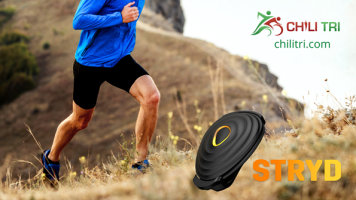
Running foot pods have been around for many years and I can remember my first one being a Nike+ one for use with my Nike+ watch! I loved that device and had many a run fascinated by the stats it gave me. My background is engineering so when this came out in 2010 I jumped on the chance to combine running and technology.
In this blog I look at the history of running foot pod and review the latest technology from Stryd and Wahoo.
 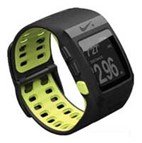 |
The Nike+ iPod The Nike+ Watch
The Nike pod fitted into a recess in your Nike+ shoe and was a basic accelerometer that detected movement and sent this data to your watch, iPod or iPhone via a proprietary link similar to Bluetooth. The running pace was determined by foot contact time. Very basic but useful to track runs and was the first in this low-cost price point.
Times have moved on and foot pods can do so much more and offer lots of metrics to improve your running form, power, efficiency and ultimately make you a faster, more efficient runner. The most advanced running footpod is the Stryd device and I will go in to how to use it in various modes depending on how much data you think you can consume.
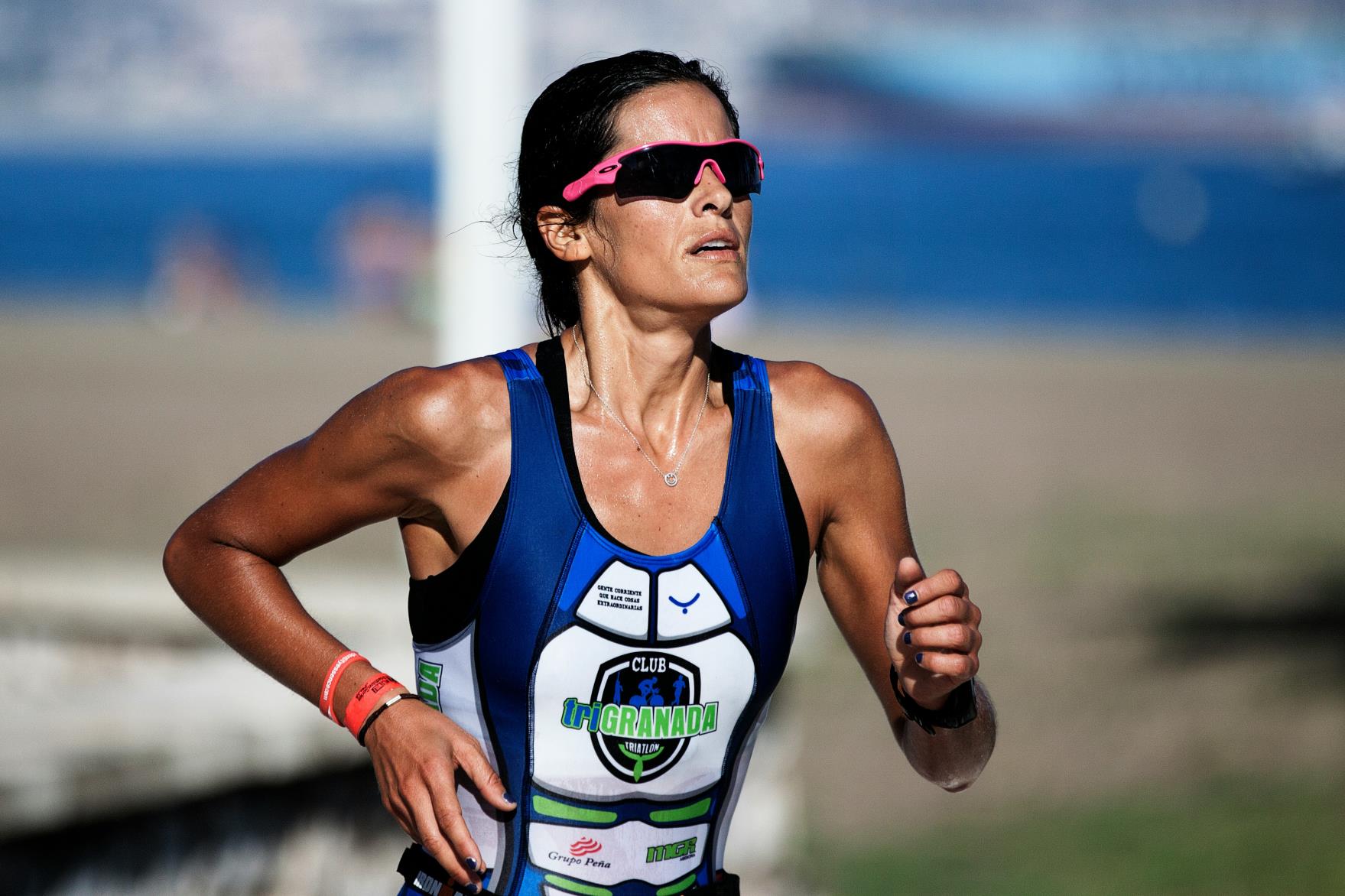
Get your FREE guide to Running Technique
Stryd and Zwift
You may already be using your indoor cycling trainer to ride around the various worlds on Zwift and you can extend your experience by running on Zwift. If you have not used Zwift yet, then running on Zwift is free and fun. All you need is a treadmill and a foot pod or heart rate monitor with cadence.
The simplest way is to open the pairing screen and search under Speed Source and Cadence Source. As long as your Stryd is charged it should appear as an option. Occasionally you might need to tap or shake the footpod to ‘wake’ it up.
If you have a regular Stryd that records power data (i.e. you are not using Stryd Live), you can use your Stryd with the Zwift platform.
While other foot pods are good at reproducing a steady pace on the treadmill, they may falter when faced with sudden changes in speed such as those which occur during interval training. The Stryd, on the other hand, handles speed changes with ease. Other foot pods might need calibrating, the Stryd often produces accurate pace out of the box, particularly when used on a high-quality treadmill.
The Stryd does however offer much more functionality than standard foot pods and whilst running on Zwift you can still collect all of your power data.
If you are running outside then you can collect all your run data by connecting it to your smart watch via ANT+ and it will give you the option to record your speed, distance, cadence, and running power. Stryd works with Garmin, Coros, Apple, Polar and Suunto. A full list of compatible watches is here. Another added benefit of your Stryd is that it offers superior pace and distance far superior to GPS. By measuring your foots motion, Stryd can report stride-by-stride changes in speed and will even work in areas where GPS cannot.
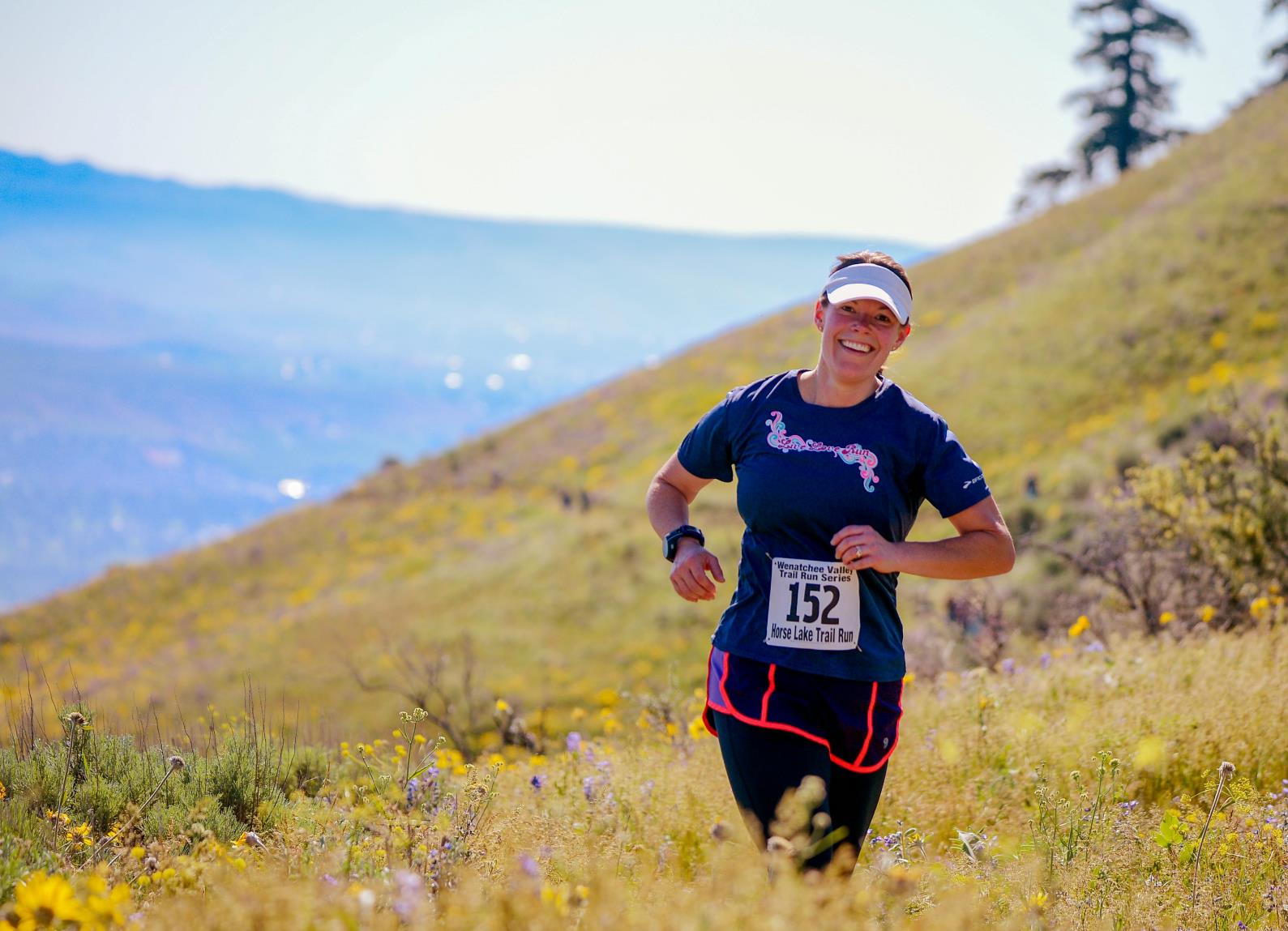
Download your FREE 8-Week Trail Running Training Plan.
If you are already a fan of Zwift then you can download a free cycling training plan and 31 structured workouts here.
Other Training Apps & Treadmill Running
You can also use your Stryd to run on Rouvy (Beta). Run-only users will have the opportunity to use ROUVY completely for free (including expired trials) as long as they keep logging run-only activities. Metrics shown in real-time while running are heart rate, pace, cadence (equals to strides-per-minute) and distance gained. Activity statistics and detail based on running metrics are SMP - strides per minute, Average Pace and Heart Rate Zones. Power stats will be added later.
Kinomap is also compatible with Stryd but their power stats are not as accurate as Stryd so if you plan to run on Kinomap record your power stats on your Stryd and use the offline sync function.
Using Stryd indoors is a great way to capture running power as well as pace and distance. Stryd does not rely on GPS and can be used in any environment to measure distance, pace, power and all other metrics. An addition Stryd will report true treadmill pace and distance. Most treadmills have a difficult time of keeping a consistent, accurate pace when a runner is on the machine. Therefore, it is difficult to know what you are really getting out of the workout! Stryd's motion capture technology tells you what is really happening so you can make treadmill running as useful as outdoor running.
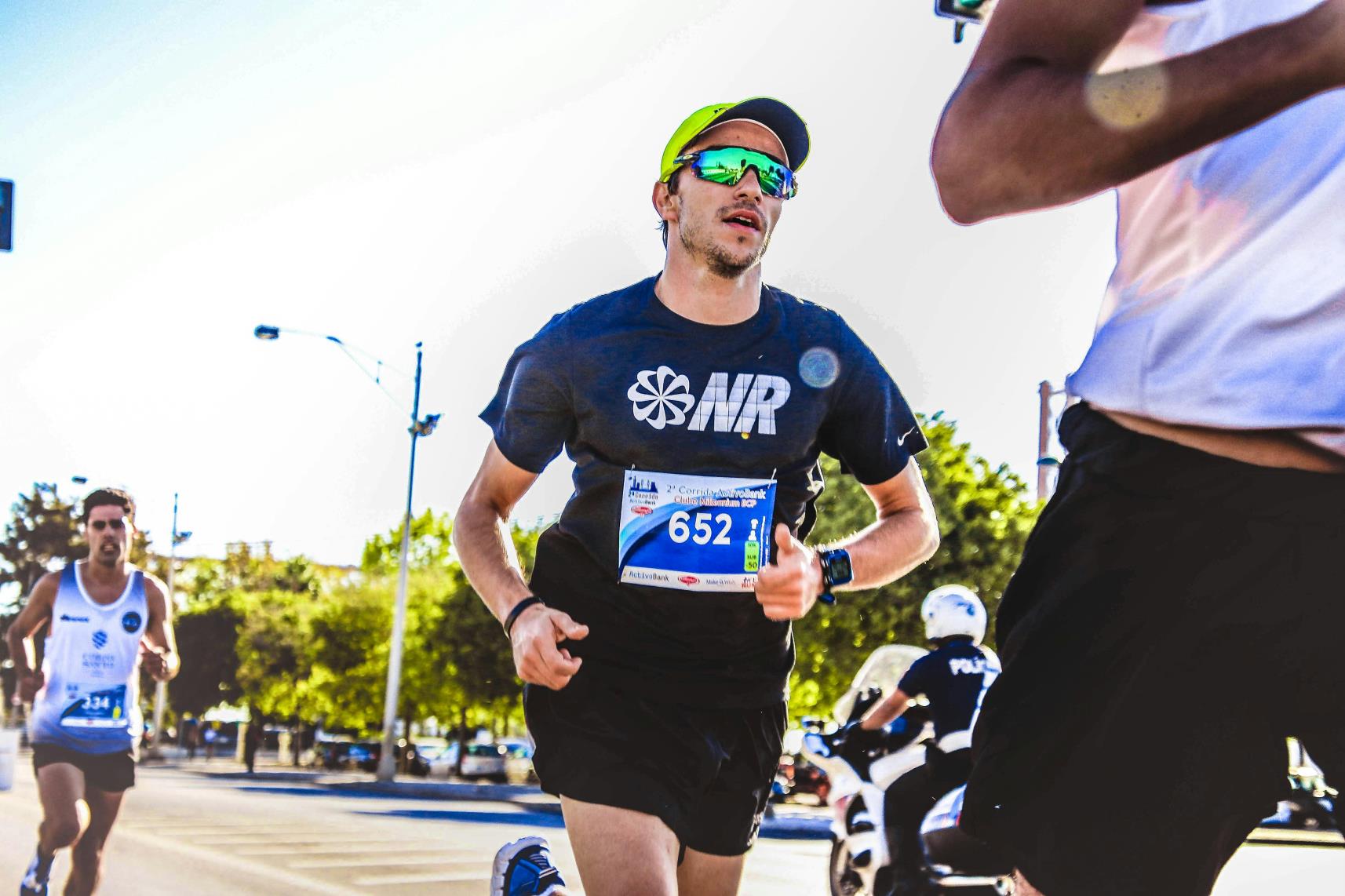
Photo by RUN 4 FFWPU
Get your FREE guide to Running Technique
Stryd Metrics
Once you have got used to running with your Stryd and have started collecting data you can use this data to get faster and more efficient. You can also improve your running style which could help avoid injuries. The Stryd device measures Power, Form Power, Ground Time, Vertical Oscillation, Cadence, Leg Spring Stiffness, Pace and Distance.
Power
Stryd tracks your foot through three-dimensional space and records the accelerations, impacts, and forces that are being applied. From that information, they calculate power, as well as provide other commonly used run metrics like distance, pace, cadence, ground contact time, vertical oscillation, etc. All of their calculations have been validated with high resolution motion capture systems, dual force plate treadmill, and metabolic testing. Power is the single number to guide your training because if factors in your effort when conquering hills and beating fatigue. It even factors in the effort to counteract wind.
Critical Power (CP) is the single value that determines your race time from 5K to Marathon. If you improve your Critical Power, you universally improve your 5K to Marathon capability. Your Stryd will track when and how much your Critical Power improves so you know what training strategies are working.
Your Stryd will auto calculate your CP – all you need to do is run. Over a few runs it will understand your current power and define your power running zones. Your running power zones will update automatically as you get fitter and if you are following a structured training plan then this will be fed back to the plan. Below is an example screen shot of a runners power and hence speed increasing over time by following a training plan.

A notification of Critical Power Update
Track all of your personal bests from your 1 second best effort, to best effort over multiple hours.
Power Duration Curve tracks your absolute best performances across every duration. What does this mean? Stryd identifies if that gruelling windy 5K over steep, rolling hills was harder than the faster 5k over a flat course. You now know whenever you have broken a new personal record.
Download your FREE 8-Week Trail Running Training Plan.
Running Stress Balance
Running Stress Balance warns you when you enter overtraining or undertraining zones so that you can balance stress and rest and stay in the training sweet spot. This is a great tool and will help you balance training hard and rest, recovery & rebuild. Over training can lead to injury and increase stress in other areas of your life and we definitely don’t need any more stress at the moment!
This for me is one of the key metrics for athletes alongside Heart Rate Variability (HRV) Apps.
The screen shot below shows what your will see in the Stryd power centre:
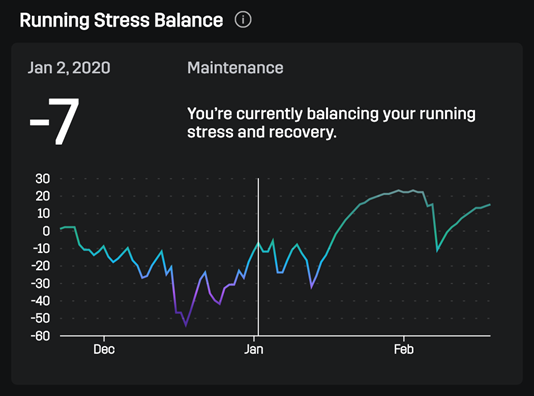
Get your FREE guide to Running Technique
You can see from the screen shot that this runner is balancing their running stress and recovery. I believe this is an extremely important metric and if it helps you avoid injury and excessive stress a great addition to your training tools. When used with Heart Rate Variability (HRV) tracking and your morning readiness score can really help you decide how hard to train that day. Rest and recovery is a key component of training enabling your body to repair and come back stronger.
Biomechanics Metrics
You will know your body better with Stryd metrics. Stryd will tell you when you are fatiguing before you feel it with leg spring stiffness, form power, cadence, ground time and vertical oscillation. As a coach I always recommend running drills during the warmup to improve posture and technique and this will not replace this but with stats you can see if the drills are working. You can see which drills work for you as they reflect back into your improvements in power.
Cadence
Cadence is the measure of your steps per minute (SPM). Typical values for Cadence are between 150-210 SPM. For triathletes we try to aim for 180 SPM which is 90 cadence on the bike so we match these which make transitioning between the two disciplines easier and more efficient.
The various platforms define and label "cadence" differently than Stryd does.
- Polar uses RPM (Reps Per Minute), which will be equal to SPM divided by 2
- Suunto uses SPM
- Garmin uses SPM
Cadence can be monitored for consistency throughout your run and may decrease with the onset of fatigue. The optimal cadence will differ from runner to runner due to physical characteristics (leg length, weight, etc.) and features of running form (foot strike, arm swing, balance etc.). It is best monitored for your specific trends over time to gain insight into how your training may be impacting your running mechanics. The average runner will have a cadence of 150 to 170 SPM, while the fastest long-distance runners are up in the 180 to 200 SPM range.
You can read more about Cadence and how to improve is here.
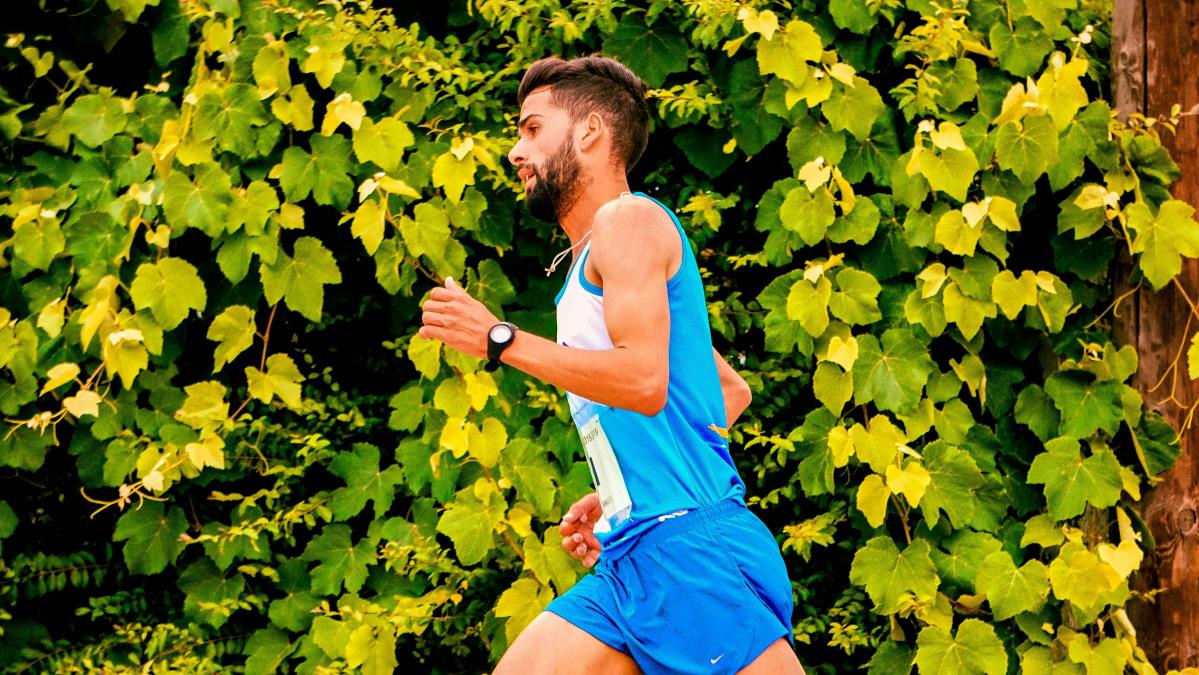
Get your FREE guide to Running Technique
Stride Length
Stride is the length of running cycle, which is the complete movement of both legs while running, whereas cadence is the number of steps per minute. Runners with a short stride and high cadence have minor impact forces and consequently a lower incidence of injuries. Moreover, a higher level of frequency “unlocks” those elastic proprieties allowing you to reduce oxygen consumption of about 20% and to increase running efficiency up to 50%. There is no optimal stride or cadence, as these values change with speed; instead, you should check your natural cadence at a given speed and train with cadence variations in a defined range between +5% and -5%.
Vertical Oscillation
Vertical Oscillation is the vertical movement of your centre of mass between steps when running. A human's centre of mass is typically at the pelvis or hip, so an easy way to think about vertical oscillation is the vertical rises and fall of your pelvis over one gait cycle (expected minimum vertical position at mid-stance of ground contact, expected maximum vertical position during float period). Typical Vertical Oscillation values will range from 3-15cm.
Ideal Vertical Oscillation will vary based on the individual. It is best used as a metric to monitor trends, rather than to aim for specific values (i.e. striving to attain a Vert. Osc. of 4.0cm). Trends will also differ from one runner to the next and as you get fitter or faster over a training cycle, but it can be useful in considering how your body may be responding to your training.
Vertical Oscillation can also be impacted by running uphill or downhill versus running on level ground. Again, the way in which your Vertical Oscillation responds to uphill’s and downhills may differ from another runner.

Get your FREE guide to Running Technique
Leg Spring Stiffness (LSS)
LSS is a model of elastic energy in the leg, assuming it acts like a spring. It is the maximum vertical force a person generates in a step divided by the displacement during ground contact time.
LSS can be a good monitor of changes to your running mechanics over time. To compare runs effectively, conditions must be the same (surface, shoe, approximate pace, etc.). It can also be analysed within training sessions to discern changes in running mechanics within a run, but it is again important to account for show or surface changes within a session. You can also add in plyometric training into your strength & conditioning sessions and use this metric to track improvements over time. You can also see how the plyometric drills like single leg hops affect your vertical oscillation and ground contact time described below.
Ground Contact Time (GCT) or Ground Contact
GCT is the amount of time per stride that your foot is touching the ground, in milliseconds. The starting trigger of your ground contact time will vary depending on your gait (heel-strike versus midfoot-strike versus forefoot-strike) but will always end at toe-off (full body removed from the ground, now in the swing phase of the gait cycle).
Ground Contact Time has an inverse relationship with metabolic power, meaning a lower Ground Contact Time is typically an indicator of a higher metabolic power (within an individual rather than across different runners). It is best used as a metric to monitor trends, rather than to aim for specific values (i.e. striving to attain a GCT of 165ms). You may experience upward trending GCT values as you fatigue near the end of a long run. You may also see Ground Contact Time decrease over the course of a training cycle as you become stronger. Other factors that will affect your GCT are shoes (cushion level and heel-to-toe offset), pace, and cadence.

Download your FREE 8-Week Trail Running Training Plan.
Form Power
Form Power is an additional component of running power relating to vertical oscillation and cadence. It is also weight dependent.
Increased Form Power can be associated with increased metabolic cost at a given pace. By decreasing Form Power, some runners may be able to decrease metabolic power and rate of perceived exertion (RPE) at a given pace.
Garmin
We can't finish this blog without mentioning Garmin. They recently announced that they would include running power in some of their premium watches without the need for a foot pod. You can read about the details in this Blog about the new Garmin features.
Wahoo TICKR X
Wahoo have upgraded their Wahoo TICKR chest heart rate monitor and added built in memory, multiple wireless connections and some running stats. The built in memory means you can go for a run or bike ride without a phone and it will record your running heart rate. It has three Bluetooth links and unlimited ANT+ connections which will help if you like to train inside using Apple devices. It also senses cycling cadence which is great if you want an easy Zwift cycling setup or want to know your cadence when out cycling. You can also use it to take your Heart Rate Variability (HRV) readings to asses your mental and physical stress levels.
For running it will record your run dynamics which are Ground Contact Time (GCT), Cadence, Vertical Ratio, Stride Length and Vertical Oscillation but NOT running power.
This means if you want to train with running power you will need a footpod or new Garmin watch. If you are happy with the run dynamics listed above then the Wahoo TICKR X is a great device.
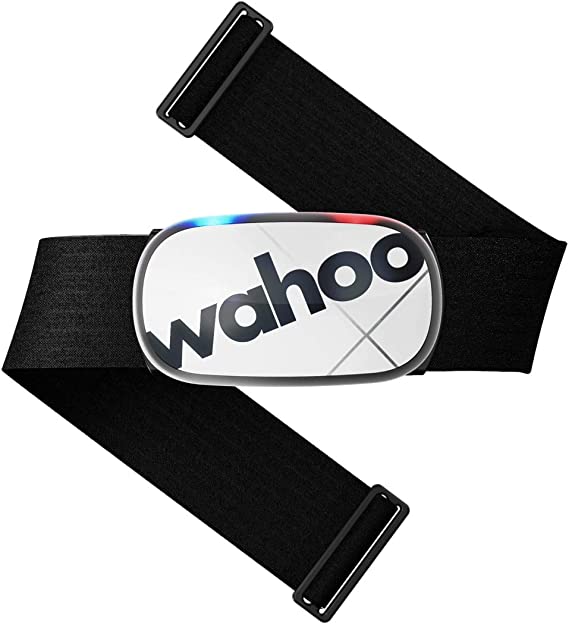
Get your FREE guide to Running Technique
Stryd Footpod – accurate and so much more than a Footpod
As you can see foot pods have moved on since the humble accelerometer and can give you as much data as you need to improve you running form, power, economy and ultimately speed.
Is it worth the money? If you are serious about wanting to improve your power and hence personal bests and avoid injury, then yes. Also, if you want to run accurately on Zwift then again yes.
If you only want to look at three things, then I would recommend tracking in your Power Centre:
- Power
- Cadence
- Running stress balance
Add this to your heart rate data collection for a very good way of monitoring your running improvement over time.
But as with all stats they are only as good as the training you do to improve them. For me as a coach I would still use heart rate for MAF or HR Zone 2 runs as a goal but for higher intensity training sessions then power is more instantaneous than heart rate so a better way to set as a training goal. Other training stimulus like running drills before every session and strength & conditioning (including plyometrics) along with the specific running training sessions such as Fartlek, hills, intervals, long runs etc will improve your stats and hence your overall running speed over your specific distance goals.
The number of stats can be a bit overwhelming but used well will be very effective and help you improve. If you think a Stryd could help you improve but you don’t have the time to analyse the data and then work out how to use it then maybe consider a Stryd coach?
For 15% of a Stryd footpod use code: coach-parnell
Would you like a free training plan? Claim your free plan or e-book.
Get your FREE guide to Running Technique
How Does Stryd Stack up Against other Technology?
| Stryd | Zwift RunPod | Wahoo TICKR X | |
|---|---|---|---|
| Running Cadence | Yes | Yes | Yes |
| Running Power | Yes | ||
| Heart Rate | Yes | ||
| Bike Cadence | Yes | ||
| Ground Contact Time | Yes | Yes | |
| Form Power | Yes | ||
| Vertical Oscillation | Yes | Yes | |
| Leg Spring Stiffness | Yes | ||
| Pace | Yes | Yes | Yes |
| Distance | Yes | Yes | Yes |
| Zwift | Yes | Yes | Yes |
| Rouvy | Yes | Yes | |
| Kinomap | Yes | Yes | |
| ANT+ | Yes | Yes | |
| Bluetooth | Yes | Yes | Yes – 3 connections |
| Memory onboard | Yes | Yes | |
| Indoor & Outdoor use | Yes | Indoors only | Yes |
Table showing Stryd versus Zwift RunPod versus Wahoo TICKR X

Stryd Power for Half IRONMAN and IRONAM Races
A question that gets asked by triathletes a lot is "what should my power target be on an IRONMAN run during a race?"
You should make sure your critical power (rFTP) is up to date and accurate. For road running events marathon distance or shorter, your power target is easy to calculate as a percentage of CP.
When doing an IRONMAM, your power target will be lower as you already spent energy during the swim and ride. There are a few options:
1. During your training cycle, do a critical power test after a long bike ride. That will allow you to get an adjusted CP value that you can then use for your race (i.e. 89% of CP for the marathon distance).
2. An alternative is to take the average power during a long brick session during training close to your event. This goes for the bike leg as well.
3. Various coaches have a method to set a power target. Below image is from Chris Hague:
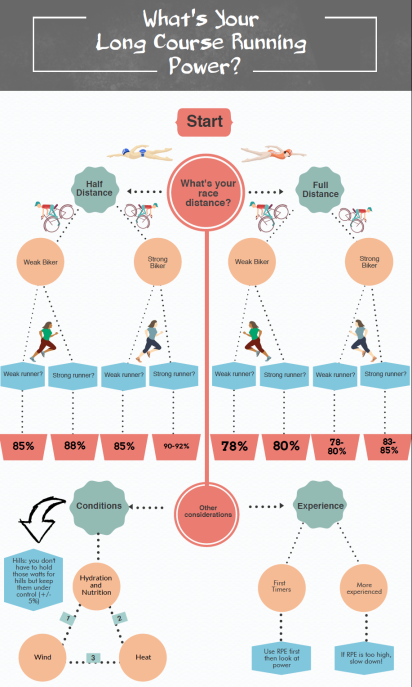
Conclusion: Running with Power
Running foot pods have come a long way, and the latest innovations—like Stryd—are game-changers for runners of all levels. With accurate power data, pacing insights, and form analysis, these little devices help you train smarter, not harder.
Whether you're chasing a new personal best or just looking to run more efficiently, embracing this tech can make a real difference. So, why not give it a try? You might be surprised at how much it can help you level up your running game! Happy running!
Karen Parnell is a Level 3 British Triathlon and IRONMAN Certified Coach, 8020 Endurance Certified Coach, WOWSA Level 3 open water swimming coach and NASM Personal Trainer and Sports Technology Writer.
Karen is currently studying for an MSc in Sports Performance Coaching at the University of Stirling.
Need a training plan? I have plans on TrainingPeaks and FinalSurge:
I also coach a very small number of athletes one to one for all triathlon and multi-sport distances, open water swimming events and running races, email me for details and availability. Karen.parnell@chilitri.com
Get your FREE Guide to Running Speed and Technique
Get your FREE Swim Workouts for Triathletes E-book
Get your FREE Open Water Swimming Sessions E-Book
FAQ: Running with Power, Stryd and Wahoo TICKR X
Q: What is running with power?
A: Running with power is the use of a power meter to measure the amount of work (in watts) you are producing while running. Similar to how cyclists use power meters to measure their effort and track improvements, runners can use power meters to track their progress, analyse their form, and optimize their training.
Q: What is Stryd?
A: Stryd is a brand of power meter designed specifically for runners. It is a small device that attaches to your shoe and measures your power output as you run. Stryd provides a variety of metrics, including power, cadence, pace, distance, and more.
Q: How do I set up Stryd?
A: To set up Stryd, you will need to follow these steps:
- Charge the device using the included charging cable.
- Download the Stryd app on your smartphone.
- Pair your Stryd device with your smartphone using Bluetooth.
- Calibrate your Stryd by performing a few test runs to establish your running power zones.
Q: How do I use Stryd while running?
A: Once you have set up Stryd, you can use it while running by attaching the device to your shoe and starting a run on your smartphone using the Stryd app. The app will display your power output, cadence, pace, and other metrics in real-time, allowing you to monitor your effort and adjust your form as needed.
Q: How can I use Stryd to improve my running?
A: Stryd provides a wealth of information about your running form and effort, which you can use to optimize your training and improve your performance. Some of the ways you can use Stryd to improve your running include:
- Analysing your power output to identify areas of weakness and adjust your training accordingly
- Monitoring your form to ensure you are running efficiently and avoiding injury
- Tracking your progress over time to see how your power output and other metrics are improving
Q: Do I need to use Stryd with a specific type of shoe or device?
A: Stryd is designed to work with a variety of shoes and devices, including both iOS and Android smartphones. However, to get the most accurate readings from your Stryd device, it is recommended that you use it with a shoe that is compatible with the device and that you calibrate it regularly.
Q: Is running with power and Stryd suitable for beginners?
A: Yes, running with power and Stryd can be beneficial for runners of all levels, including beginners. By providing real-time feedback on your effort and form, Stryd can help you optimize your training and avoid injury, even if you are just starting out. However, it is important to ease into using the device gradually and seek advice from a coach or other expert if you have questions or concerns.
Q: What is the Wahoo TICKR X?
A: The Wahoo TICKR X is a heart rate monitor designed for athletes and fitness enthusiasts. It can be worn on your chest or arm, and it tracks your heart rate, calories burned, and other workout metrics.
Q: How does the Wahoo TICKR X work?
A: The Wahoo TICKR X uses Bluetooth and ANT+ technology to connect to your smartphone, smartwatch, or other device. It tracks your heart rate using an optical sensor that measures the blood flow through your skin.
Q: What features does the Wahoo TICKR X have?
A: The Wahoo TICKR X has a range of features, including:
- Accurate heart rate tracking
- Real-time heart rate zone tracking
- Calorie burn tracking
- Built-in memory for workouts without a device connection
- Compatibility with a range of fitness apps and devices
- Running analytics, such as cadence and ground contact time, when used with certain apps
Q: How do I use the Wahoo TICKR X?
A: To use the Wahoo TICKR X, you will need to follow these steps:
- Wet the electrode areas on the back of the device.
- Attach the device to your chest or arm, according to the manufacturer's instructions.
- Connect the device to your smartphone or other device using Bluetooth or ANT+.
- Start your workout, and the Wahoo TICKR X will automatically track your heart rate and other metrics.
Q: How accurate is the Wahoo TICKR X?
A: The Wahoo TICKR X is generally considered to be a highly accurate heart rate monitor. It uses both optical and electrical sensors to ensure accurate heart rate tracking, and it has been tested against other leading heart rate monitors in a variety of conditions.
Q: Can I use the Wahoo TICKR X for swimming?
A: No, the Wahoo TICKR X is not recommended for swimming or other water-based activities. The device is water-resistant, but it is not designed to be fully submersed in water.
Q: How do I clean and maintain the Wahoo TICKR X?
A: To clean the Wahoo TICKR X, wipe it down with a damp cloth after each use. Do not use harsh chemicals or solvents, as these can damage the device. To maintain the battery life, turn the device off when not in use and replace the battery as needed.
Q: Can I use the Wahoo TICKR X with other fitness equipment?
A: Yes, the Wahoo TICKR X is compatible with a range of fitness equipment, including treadmills, exercise bikes, and rowing machines. Simply connect the device to your equipment using Bluetooth or ANT+ to track your heart rate and other metrics.
